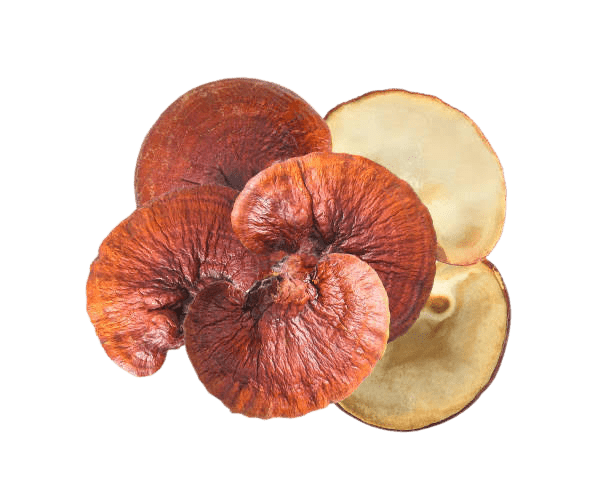Als Verbraucher sind wir uns zunehmend darüber im Klaren, was wir unserem Körper zuführen – und woher es kommt. Bei Pilzen und anderen Nutzpflanzen gibt es einen erheblichen Unterschied zwischen denen, die im Freien in artenreichen Umgebungen angebaut werden, und denen, die in synthetischen Laborumgebungen gezüchtet werden. Während im Labor angebaute Nutzpflanzen sauber und praktisch erscheinen, fehlt ihnen oft der Nährstoffreichtum und die ökologischen Vorteile von Nutzpflanzen, die von der Natur selbst hervorgebracht wurden. Was macht also im Freien angebaute Nutzpflanzen zu einer besseren Wahl? Lassen Sie uns die ernährungsphysiologischen und ökologischen Vorteile der Wahl von Nutzpflanzen untersuchen, die in ihrem natürlichen Lebensraum gedeihen.
1. Nährstoffdichte: Die Kraft des natürlichen Bodens
Einer der überzeugendsten Gründe, warum im Freien angebaute Pflanzen nahrhafter sind, liegt in ihrer Wechselwirkung mit dem Boden. In einer natürlichen Umgebung wachsen Pflanzen in einer komplexen Bodenmatrix, die reich an Mineralien, nützlichen Mikroorganismen und organischen Stoffen ist, die zum Nährwertprofil einer Pflanze beitragen. Die Bodengesundheit ist für die Nährstoffdichte entscheidend: Studien zeigen, dass Pflanzen, die in abwechslungsreichen Böden wachsen, größere Mengen an Mineralien, Vitaminen und Phytochemikalien aufnehmen, darunter Polyphenole und Antioxidantien, die für unsere Gesundheit wichtig sind.
Eine in Agriculture, Ecosystems & Environment veröffentlichte Studie ergab beispielsweise, dass Nutzpflanzen, die auf Feldern mit biologischer Vielfalt angebaut werden, deutlich höhere Mengen an Mikronährstoffen wie Magnesium, Kalium und Kalzium aufweisen als Nutzpflanzen aus Monokulturen oder künstlichen Umgebungen. Wildpflanzen und Pilze nehmen eine Reihe von Mineralien aus dem Boden auf und steigern so ihren Wert für unsere Ernährung. Pilze beispielsweise erhalten durch ihre symbiotische Beziehung mit dem Boden und der umgebenden Flora einzigartige Verbindungen wie Ergothionein – ein starkes Antioxidans.
2. Mikrobielle Interaktionen in der Umwelt: Stärkung der Immunität bei Nutzpflanzen und Verbrauchern
Im Freien interagieren Nutzpflanzen mit einer Vielzahl von Mikroorganismen, die eine wesentliche Rolle für ihre und letztlich auch unsere Gesundheit spielen. Dieses Phänomen ist Teil des sogenannten „Rhizosphäreneffekts“, der sich auf die mikrobiellen Gemeinschaften bezieht, die in den Wurzelzonen von Pflanzen gedeihen. Diese Mikroben helfen Pflanzen, Nährstoffe aufzunehmen und natürliche Abwehrkräfte zu entwickeln, wodurch ihre Widerstandsfähigkeit und ihr Nährwert verbessert werden.
Im Labor gezüchteten Pflanzen fehlen diese mikrobiellen Interaktionen oft, da sie unter sterilen Bedingungen kultiviert werden. Diese Trennung von natürlichen Ökosystemen kann zu schwächeren und weniger nahrhaften Pflanzen führen. Darüber hinaus stellte eine Studie in Frontiers in Microbiology fest, dass in natürlichem Boden angebaute Pflanzen nützliche Mikroben beherbergten, die sowohl die Immunreaktionen der Pflanzen als auch ihr Nährwertprofil verbesserten.
3. Sekundärmetaboliten: Das Geheimnis natürlicher gesundheitlicher Vorteile
Einer der einzigartigen Vorteile von im Freien angebauten Pflanzen ist ihre Produktion von sekundären Metaboliten – Verbindungen, die Pflanzen bilden, um sich an Umweltstressoren wie Schädlinge, UV-Strahlen und schwankende Temperaturen anzupassen und sich gegen sie zu verteidigen. Diese Verbindungen, darunter Polyphenole, Flavonoide und Glucosinolate, tragen zur Farbe, dem Geschmack und dem Aroma der Pflanze bei. Noch wichtiger ist, dass sie mit verschiedenen gesundheitlichen Vorteilen in Verbindung gebracht werden, wie z. B. verringerten Entzündungen, einer verbesserten Immunfunktion und einem antioxidativen Schutz.
Studien zeigen, dass im Labor unter kontrollierten Bedingungen gezüchtete Pflanzen aufgrund fehlender Umwelteinflüsse geringere Mengen dieser wertvollen Metabolite produzieren. Im Gegensatz dazu produzieren Pflanzen, die den Elementen ausgesetzt sind, ein breiteres Spektrum dieser Verbindungen, von denen wir beim Verzehr profitieren. Beispielsweise enthalten wild gezüchtete Pilze oft deutlich höhere Mengen an Antioxidantien und Polysacchariden, die nachweislich die Immungesundheit unterstützen, als ihre im Labor gezüchteten Gegenstücke.
4. Ökologischer Fußabdruck: Nachhaltige Landwirtschaft im Einklang mit der Natur
Neben den ernährungsphysiologischen Vorteilen fördert der Freilandanbau auch die ökologische Nachhaltigkeit. Wenn Nutzpflanzen in biologisch vielfältigen Umgebungen angebaut werden, tragen sie zu einem gesünderen Ökosystem bei, indem sie die Bodenfruchtbarkeit fördern und Lebensräume für Wildtiere unterstützen. Freilandkulturen sind oft Teil regenerativer landwirtschaftlicher Praktiken, die den Bedarf an synthetischen Düngemitteln, Pestiziden und künstlicher Beleuchtung reduzieren – alles Dinge, die in Laboren oder Monokulturen häufig verwendet werden.
Darüber hinaus fördern im Freiland angebaute Nutzpflanzen die Artenvielfalt. Laut einer Studie von Nature Sustainability verbessern biodiverse Farmen nicht nur die Bodengesundheit und die Wasserspeicherung, sondern erhöhen auch die Widerstandsfähigkeit lokaler Ökosysteme gegen den Klimawandel. Diese Artenvielfalt führt zu nährstoffreicheren Nutzpflanzen und einem insgesamt gesünderen Planeten.
5. Natürlich angebaute Pilze wählen: Der Mushify-Unterschied
Wir bei Mushify glauben daran, die Kraft der Natur zu nutzen, um hochwertige Pilzprodukte zu liefern. Unsere Pilze werden in Umgebungen angebaut, in denen das empfindliche Gleichgewicht zwischen Pflanzen, Pilzen und Mikroorganismen respektiert und gefördert wird. So wird sichergestellt, dass sie reich an Nährstoffen und frei von synthetischen Einflüssen sind. Dieses Engagement für naturorientierte Praktiken stellt sicher, dass jedes Mushify-Produkt die natürlichen Verbindungen enthält, die Ihr Körper zum Gedeihen braucht.
Wenn Sie sich für im Freien angebaute, biodiverse Extrakte von Mushify entscheiden, unterstützen Sie nicht nur Ihre Gesundheit, sondern auch nachhaltige, umweltfreundliche Anbaumethoden. In einer biodiversen Umgebung angebaute Pilze liefern komplexe Nährstoffe, die im Labor einfach nicht reproduziert werden können – Nährstoffe, die Ihren Körper unterstützen, Ihre Widerstandskraft stärken und Ihr Wohlbefinden steigern.
Zusammenfassend
Die Entscheidung für im Freien angebaute, natürlich kultivierte Pflanzen bietet eine Reihe von Vorteilen, von einer erhöhten Nährstoffdichte und vorteilhaften mikrobiellen Interaktionen bis hin zu einer erhöhten Produktion gesundheitsfördernder sekundärer Metabolite. Die Entscheidung für Mushify bedeutet, dass Sie sich für Produkte entscheiden, die im Einklang mit der Natur angebaut werden und Ihnen das Beste bieten, was die Natur zu bieten hat – ohne Kompromisse.
Die Rolle der Bodenbiodiversität bei der Erhaltung von Bodenfunktionen und Ökosystemdienstleistungen (Landwirtschaft, Ökosysteme und Umwelt). Verfügbar unter: Landwirtschaft , Ökosysteme und Umwelt .
Mikrobielle Symbiose in Boden- und Erntequalität (Frontiers in Microbiology). Verfügbar unter: Frontiers in Microbiology .
Antioxidantien- und Polysaccharidgehalt in wilden und kultivierten Pilzen (Journal of Agricultural and Food Chemistry). Verfügbar unter: Journal of Agricultural and Food Chemistry
Biodiversität und Widerstandsfähigkeit in nachhaltiger Landwirtschaft (Nature Sustainability). Verfügbar unter: Nature Sustainability .


